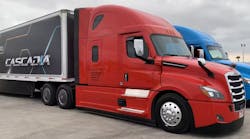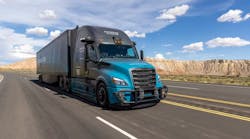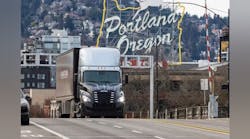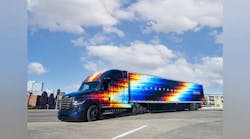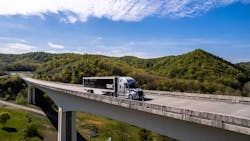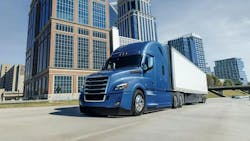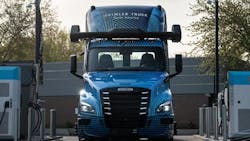A look back at the Freightliner Cascadia evolution from 2007 to 2025
From its inception as a more aerodynamic, lightweight, and reliable heavy-duty truck, the Freightliner Cascadia has evolved over four generations to become the Class 8 commercial truck market leader.
Since its debut, the Cascadia has improved fuel economy by 35%. Its fifth generation will add to that, Daimler Truck North America engineers said. Along with its integrated technology, Freightliner leaders said the next Cascadia will offer fleets even better total cost of ownership, thanks to better fuel efficiency and safety technology.
Mark Rourke, CEO of Schneider National (No. 6 on the FleetOwner 500: For-Hire), said TCO is a significant part of his fleet’s philosophy, and that has helped Schneider remain loyal to Freightliner.
“We'll look at lots of different technologies and components over time, but we have such a deep and meaningful relationship at that technical level within our organization, so I think there's a comfort to help us be the lowest cost operator as it relates to individual component systems and how we can get better over time and lower our cost to serve,” Rourke told industry media in Detroit in September before a sneak preview of the new Cascadia. “I think that relationship is a real, meaningful differentiator for Freightliner. I think you deserve great credit for that, and listening to your customers allows us to get in early and learn from you and also learn from us and our experience of putting these products to work over here.”
See also: History of trucking’s major OEMs
With the fifth generation Cascadia slated for 2025 production, here is a look back at how DTNA has innovated and continued to build on previous models and established and emerging technologies since 2007.
2007: Freightliner introduces the all-new Cascadia model with the Detroit Diesel DD15 engine platform. The truck succeeds Freightliner’s Class 8 Century Class and Columbia models. The new Cascadia incorporates new aerodynamics, lightweighting, and improved maintenance.
The Class 8 Cascadia truck, engineered to accommodate EPA ’07 and ’10 engine regulations, offers a 3% boost in fuel economy over previous models and generous driver amenities in a totally redesigned cab.
From the FleetOwner archives: Freightliner unveils “revolutionary” Cascadia
2011: Freightliner announced during the Mid-America Trucking Show that new chassis side fairings and side extenders are being added to the already aerodynamic Cascadia to improve its fuel economy by an additional 1.8%. Freightliner is also offering lightweight options of the Cascadia to lower the total cost of ownership for fleets.
From the FleetOwner archives: Freightliner enhances Cascadia’s aerodynamics
2012: Freightliner launches the Second Generation Cascadia, engineered to increase fuel efficiency. The new version of the Cascadia introduced the Detroit DT12, an automated manual transmission (AMT) that combined the operational ease of an automatic with the efficiency of a manual transmission.
Daimler Truck North America officials said when they unveiled the truck that this new generation of Freightliner Trucks’ over-the-road Cascadia tractor achieves 5% better fuel economy than the previous model and 7% better than the first generation EPA-2010 compliant model.
From the FleetOwner archives: Next-generation Cascadia boosts fuel economy by 5%
2013: DTNA introduces Detroit Connect to Freightliner trucks, the first OEM-provided, factory-installed connectivity suite to the Cascadia.
With an integrated onboard tablet, DTNA consolidated all its telematics offerings under the Detroit Connect brand name to provide “a suite of telematics products that gives us a launching pad to bring out whatever future products we might want to develop,” Brad Williamson, DTNA manager of engine and component marketing, said during a launch event in Detroit that year.
From the FleetOwner archives: Daimler adds telematics to Detroit brand
2014: DTNA unveils Detroit Assurance, the first OEM-designed proprietary suite of safety systems, during American Trucking Associations’ 2014 Management Conference & Exhibition.
The new offering combines camera- and radar-based systems with carefully designed driver-friendly controls and close interaction with Detroit engine and transmission controllers, according to the company. The radar system offers adaptive cruise control that extends into collision mitigation with active braking.
From the FleetOwner archives: DTNA releases safety system suite for Cascadia
2015: Using the Freightliner Cascadia as a framework, Daimler debuts the Freightliner Inspiration Truck, the first licensed automated commercial truck.
The autonomous truck debuted with an international media event streamed live from the Hoover Dam in Nevada. DTNA set a world record by turning the 726-foot-high dam into the world’s largest project screen as the Inspiration Truck drove across the top of the dam.
From the FleetOwner archives: New autonomous Freightliner rolls across Hoover Dam, really
From the FleetOwner archives: Freightliner’s autonomous truck explained: On the drawing board, on the road
2015: Freightliner unveils its first SuperTruck, a technologically advanced Cascadia developed with a $40 million U.S. Department of Energy grant.
The futuristic tractor gets 12.2 mpg, improves freight efficiency by 115%, and achieves 50.2% engine brake thermal efficiency, the OEM announced during the Mid-America Trucking Show that spring.
From the FleetOwner archives: DTNA shows off SuperTruck and other offerings at MATS
2017: DTNA launches the third generation Cascadia for the 2018 model year. The third generation Cascadia brought advanced aerodynamics, improved safety features, connectivity advancements, and driver comfort enhancements to meet the evolving needs of fleets and drivers.
Officially dubbed the “New Cascadia,” it combines state-of-the-art electronics, advanced powertrain integration, new technologies, and refined aerodynamics to deliver up to an 8% improvement in fuel economy compared to the previous Cascadia.
From the FleetOwner archives: Freightliner debuts all-new 2018 Cascadia
2018: Daimler unveils its first two all-electric Freightliner trucks, the heavy-duty eCascadia and medium-duty eM2. Built on the Freightliner Cascadia platform, DTNA told media at the time that the eCascadia would offer a range of 250 miles and be recharged up to 80% of capacity in 90 minutes, offering an additional 200 miles of driving. The eCascadia has up to 730 peak horsepower, and the batteries provide 550 kWh usable capacity.
From the FleetOwner archives: Daimler unveils two all-electric Freightliner trucks
2019: DTNA doesn’t wait long to roll out its fourth generation Cascadia, featuring SAE Level 2 driver assistance capabilities, making it the first heavy-duty North American truck capable of automated steering and acceleration/deceleration.
The model year 2020 Freightliner Cascadia, offering Level 2 automated features and a series of efficiency and safety upgrades, was shown for the first time during a press conference timed with the start of CES. Daimler Truck also announced ambitious plans to bring Level 4—or highly automated—trucks to the U.S. within a decade.
From the FleetOwner archives: Updated Freightliner Cascadia to offer semi-automated driving
2019: Daimler Truck acquires a majority stake in Torc Robotics, a U.S.-based vehicle automation pioneer. The following year, Torc announced plans to scale its self-driving truck testing using the latest generation of the Freightliner Cascadia.
According to both companies, their joint goal is to reinvent the truck by co-developing a Level 4 Freightliner Cascadia that includes safety-critical redundancy components and the integration of additional computers and hardware required for self-driving technology.
From the FleetOwner archives: Torc Robotics quietly developing the fleet product of the future
2022: At the Advanced Clean Transportation Expo in Long Beach, California, Freightliner announces eCascadia serial production will begin later that year.
Designed for a full integration with the eCascadia, Detroit’s ePowertrain provides two e-axle designs, including a dual motor with max torque of 23,000 lb.-ft. and max power of 395 hp., and a single motor featuring a max torque of 11,500 lb.-ft. and max power of 195 hp.
From the FleetOwner archives: DTNA: Freightliner eCascadia marks shift in product strategy
2023: Freightliner SuperTruck II is unveiled during the Manifest conference in Las Vegas.
With advanced aerodynamics, low-rolling resistance tires, powertrain improvements, and advanced technologies for energy management, DTNA built its most efficient diesel-powered truck in history. It can even roll down the highway without the engine running, thanks to its EcoSail system.
Co-funded by the U.S. Department of Energy, the SuperTruck program encourages OEMs to develop fuel-saving technology. Along with showing off its SuperTruck II, DTNA announced that the DOE also provides funding for the Freightliner SuperTruck III, slated to be unveiled in 2027.
From the FleetOwner archives: Freightliner’s SuperTruck II previews diesel’s more efficient future
2023: Torc Robotics announces its plans to commercialize its self-driving technology by offering Freightliner customers the option to spec the Level 4 autonomous capabilities on Cascadias as early as 2027.
From the FleetOwner archives: Torc’s commercialization plans include fleet-focused self-driving Cascadias in 2027
2024: Freightliner produces its one millionth Cascadia truck, which DTNA said is the first Class 8 truck to reach the seven-figure milestone.
From the FleetOwner archives: Freightliner produces 1 millionth Cascadia
2024: DTNA adds Torc Robotics’ Level 4 autonomous driving technology to a Freightliner eCascadia demonstration vehicle, which it debuts at ACT Expo that spring.
From the FleetOwner archives: Daimler sets out to demonstrate how autonomous EVs could change trucking
2024: Freightliner debuts its Fifth Generation Freightliner Cascadia during its annual customer event held during American Trucking Associations’ Management Conference & Exhibition in Nashville, Tennessee.
From the FleetOwner archives: Freightliner’s next Cascadia packed with more safety tech and efficiency gains
About the Author
Josh Fisher
Editor-in-Chief
Editor-in-Chief Josh Fisher has been with FleetOwner since 2017. He covers everything from modern fleet management to operational efficiency, artificial intelligence, autonomous trucking, alternative fuels and powertrains, regulations, and emerging transportation technology. Based in Maryland, he writes the Lane Shift Ahead column about the changing North American transportation landscape.
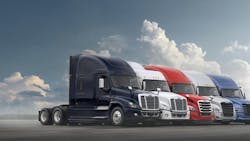
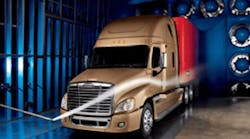
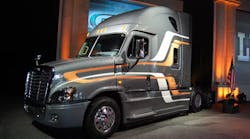

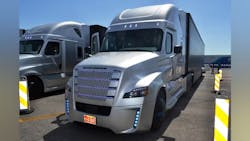
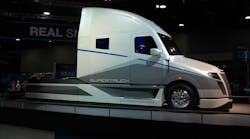
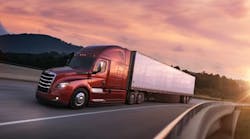
![Daimler Truck North America unveiled on June 6 what President and CEO Roger Nielsen said will be the “broadest [electric] truck fleet in North America by 2021.” Daimler Truck North America unveiled on June 6 what President and CEO Roger Nielsen said will be the “broadest [electric] truck fleet in North America by 2021.”](https://img.fleetowner.com/files/base/ebm/fleetowner/image/2024/10/670d1f1629ed4743add53066-fleetowner_34938_roger_electric_5.png?auto=format,compress&fit=max&q=45&w=250&width=250)
